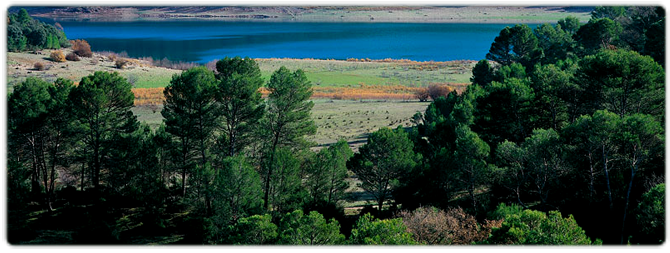Mediterranean laurel forest
Singular places
, Cazorla
River Borosa
Laurel forests are probably the most pure and best preserved forests you will find on the lower slopes of the Nature Reserve’s mountains, tucked away in ravines and unspoiled slopes where the soil is deep and rich. There are still some vestiges of the primeval laurel forests and the lower part of the Borosa river basin is one place where you can find them. A striking laurel forest with strawberry trees, barberries and laurustinus covers the basin’s slopes. The highlight of this forest is the entrance to the Cerrada de Elías canyon, where strawberry trees and barberries form a canopy over a long section of the route.
But what is a laurel forest?
There are many types of plants in Mediterranean forests, depending on their state of conservation and how rich and deep the soil is. Laurel forests grow in the best places, where the soil is deep and rich in organic matter, along with bushes and smaller trees with shiny green perennial leaves.
The forest mainly comprises strawberry trees (Arbustus unedo), broad-leaved Phillyrea (Phillyrea latifolia), Laurustinus (Viburnum tinus) and climbing plants, including honeysuckle (Lonicera implexa) and rough bindweed (Smilax aspera). These bushes are occasionally accompanied by oaks (Quercus faginea and Quercus ilex ballota). Where the strawberry trees and Phillyrea grow very close together, however, they let in so little sunlight that nothing can survive beneath them but their own seedlings. Laurel forests are the dominant plant succession phase on the Nature Reserve’s lower slopes.
The forests come from the vegetation that grew profusely in southern Europe before the Quaternary glaciations. After the glaciations, the laurel forests had more elements than before (such as laurel trees, which lend their name to this type of forest) and no choice but to adapt to a colder, drier climate. They lost elements and took refuge on the middle slopes of the mountains and valleys in sub-humid precipitation zones where the soil was deeper and the climate milder. Gall oaks (Quercus faginea), Montpelier maple (Acer monspessulanum) and wild service trees (Sorbus torminalis) were other plant elements that arrived with the glaciations of southern latitudes and found an ideal habitat in the laurel forests.
LOCATION
Take the A-319 to Borosa. When you arrive at the Torre del Vinagre Visitors Centre, turn right and continue on to the fish factory. There you can park your car and go upstream on foot. Very soon, when you come to the fountain at the Astillero, you will begin to see Mediterranean laurel forests. You can go right to other end of Cerrada de Elías canyon, where your walk through the laurel forests ends.




